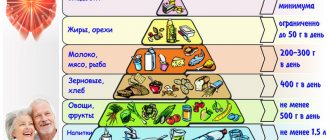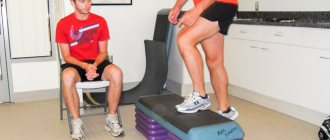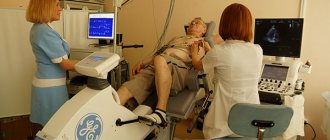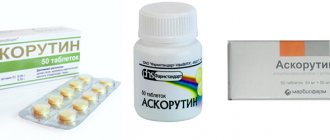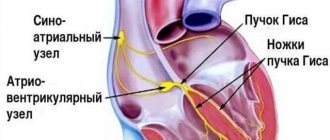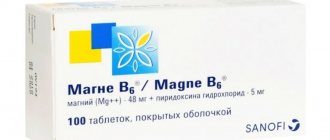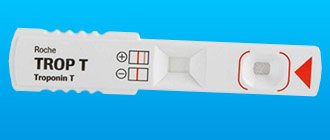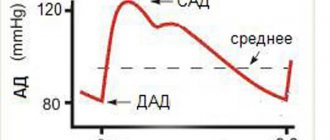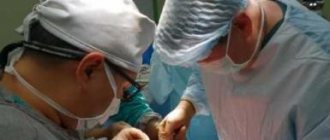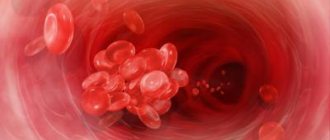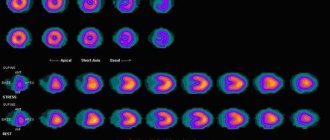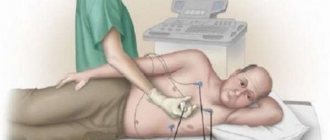Tests that determine physical performance (PWC) are used both in cardiology practice and during the annual medical examination of children and adults professionally involved in sports.
After the increasing number of deaths in physical education classes, the Ruffier test (RS) is a mandatory screening for obtaining a medical certificate for a secondary school, and its result, the Ruffier Index, for schoolchildren is a basic indicator that determines their health group for physical education.
Ruffier PWC testing - regular squats help assess cardiac endurance
The Ruffier test for children is also a diagnostic examination, a certificate of completion of which is a prerequisite for enrollment in any sports or dance section. Please note that parents must themselves be interested in obtaining such a permit.
The price of joint irresponsibility (parents and coach) is the child’s poor health, decreased academic performance, development of cardiac pathologies, and increased risk of sudden cardiac arrest.
The essence of the method. Advantages and disadvantages
The basic principle of tests to assess the fitness of the heart muscle is to perform simple but intense physical exercises. During the first few minutes, the heart rate is assessed and compared with generally accepted standards or with certain scales. So, for example, when conducting the Ruffier test, squats are used at a fairly intense pace, and when performing the Harvard Step Test (HST), rapid climbs onto a low bench from a standing position are used. The increase in heart rate is subject to a linear relationship - the more adapted the heart is to the load, the less tachycardia after it and vice versa. That is, a trained heart tends to have a normal or even slower rhythm rather than a faster one.
The advantages of such methods are the possibility of independent use, simplicity and accessibility of the method. In addition, the test does not require expensive equipment, as in tests with physical activity during bicycle ergometry or treadmill testing, and therefore can be quickly and informatively used when conducting mass examinations.
Among the disadvantages of the method, one can note the risk of a hypertensive crisis or cardiac arrhythmia, as with any test with physical activity.
Regarding the Rufier test in children, it can be said that the disadvantage is the fact that when calculating the indicator, the child’s age is not taken into account, because the heart rate in children of primary school age is higher than in adolescents and adults. As a result, the Ruffier index in a small child is higher, although he does not have heart failure. As a result, the child may be denied participation in the sports section, which is a reason for frustration for both the parents and the child himself.
Essence of the method
To perform the test, a couch and a stopwatch are enough. Ideally, the test should be carried out by a medical professional - a nurse or paramedic. They will be able to help the test subject if he suddenly becomes ill during the test. However, the test is often carried out, for example, by coaches in sections.
The Ruffier test should ideally be performed by a medical professional
The principle of the test is to perform light physical activity for a certain time and evaluate the heart rate before and after exercise. In the case of a trained heart, the pulse will be rather slow, it will not jump too much and will recover quickly.
Ruffier's test helps to see the increase in heart rate during physical activity and the rate of recovery of the body.
Indications for testing
The Ruffier test and the modified Ruffier-Dixon test are carried out mainly by healthy individuals involved in professional sports, or entering sports schools and sections. In recent years, the Ruffier test has been included in the standards for medical examination of a child before entering an educational institution. This is due to the fact that some cardiac diseases in children can occur hidden, and the child may feel unwell during physical education class. The Ruffier test will help determine whether the child is able to tolerate physical activity.
Contraindications
Under no circumstances should the Ruffier test be performed on a person suffering from a cardiac disease with chronic heart failure. To determine the functional class in such patients, there are more complex tests (VEM, treadmill), or a 6-minute walk test.
In addition, squats should not be performed by a child or an adult if he has problems with the musculoskeletal system, as this disease may worsen.
Preparation
To get the most accurate result, the following conditions must be met:
- For the person being tested, at least 2 hours must have passed since the last meal, but the test cannot be performed on an empty stomach either;
- The child should come to the test well-rested;
- Also, the small test subject should be explained the principle of conducting the test so that he does not experience stress during it, as this can also distort the final results;
- Before the test, the subject should not smoke, drink alcohol, tea or coffee;
- Only a light breakfast is allowed;
- You should not take medications that normalize blood pressure;
- It is advisable to sit for 10-15 minutes before the test;
- Clothing should be loose and not restrict movement.
Preparation for the procedure
No special preparation is required on the eve of the study.
On the morning of the test, the patient should not take drugs for high blood pressure such as beta-blockers (bisoprolol, metoprolol, anaprilin, etc.), verapamil and diltiazem, since these drugs for high blood pressure reduce the heart rate, causing the doctor to may obtain distorted research results.
In addition, on the day of the study you are strictly forbidden to smoke or drink alcohol. A light breakfast is allowed in the morning.
Regarding children, it can be noted that the child should come to the study sleepy and rested. Parents should explain to the child what the principle of the test is in order to eliminate the child’s worries, since stress causes tachycardia. The child should not run or play active games before the study.
Norm and deviations in children and adolescents
Further assessment of indicators is carried out using tables that take into account the age of children. For first-graders, the test results are as follows:
- excellent – 6,
- good – 6.5 – 11,
- satisfactory – 12 – 16,
- weak – 17 – 21,
- very bad – over 21.
After 15 years the criteria are more stringent. They are distributed according to the given gradations as follows:
- 0;
- 0,5 — 5;
- 6-10;
- 11-15;
- over 15.
An example of the results of an examination of medical school students.
An excellent indicator means that the child can seriously engage in sports, but a very poor indicator means that an examination and special low-intensity training are required, and possibly hospital treatment.
How is the Ruffier test performed?
In the office of the doctor conducting the test, the patient rests and relaxes as much as possible in a sitting position for about five minutes. Next, the doctor counts his pulse in a lying position for 15 seconds. The resulting value is conventionally designated as P1. The patient then performs 30 squats in 45 seconds. This is a pretty intense pace, so if he can't squat that fast, he should do it at a pace that feels comfortable to him.
After squats, the recovery period begins in a lying position. During the first 15 seconds of the rest period, the pulse (P2) is calculated. After another half a minute, the pulse is counted again (at the end of the first minute of rest) for 15 seconds and the P3 value is obtained.
After performing the specified manipulations, the patient rests, and the doctor calculates the Ruffier index.
Ruffier-Dixon test (index) for children and adults. Harvard step test
Table of contents
- Introduction
- Sample (index) Ruffier
- Ruffier–Dixon test (index)
- Harvard step test
- Contraindications
- Addition
The cardiorespiratory system most fully reflects the state of the body at any given point in time. And in order to reduce and minimize the influence of the volitional component when conducting tests, it is best to use so-called stress tests. One of the best tests of this kind is the Ruffier test and its modification, the Ruffier-Dixon test , which uses heart rate values during different recovery periods after relatively light loads. Changing the heart rate ensures the adaptation of the circulatory system to the needs of the body and environmental conditions. To carry out tests, you only need a stopwatch or a watch with a second hand.
In many types of sports activities, and in everyday life, there is a rule of limiting systems. Its meaning is that each person has the most vulnerable system, which determines the load limit after which this system breaks down and the disease begins. The main problem is that this “thin place” in the body does not manifest itself in any way for the time being.
The method allows you to assess the performance of the heart and the fitness of the body as a whole:
- assess adaptation of the cardiovascular system to physical activity
- determine the body's physical tolerance
- assess the reserve functionality of the heart
- determine the speed of recovery processes of the cardiovascular system after physical activity
Sample (index) Ruffier
After resting in a supine position for 5 minutes (or, if lying down is not possible, then after resting while sitting), the subject's pulse is measured for 15 seconds (P1); then within 45 seconds the subject performs 30 squats. After the end of the load, the subject lies down (sits down) and his pulse is again calculated for the first 15 seconds (P2), and then for the last 15 seconds of the first minute of rest (P3). Heart performance is assessed using the formula:
Table:
That is,
- Rest for 5 minutes, measure your pulse for 15 seconds,
- 30 squats in 45 seconds, sit down (here the so-called “ first minute of rest ” began) and count the pulse for 15 seconds,
- After 30 seconds, we again count the pulse for 15 seconds (that is, the last 15 seconds of the “first minute of rest”).
Briefly, for an adult : if the resulting index is less than 3, good performance; 3–6 - average; 7–9 — satisfactory; 10–14 — poor (moderate heart failure); 15 and above (severe heart failure)
If testing is carried out for children , then based on the test results, the children are divided into physical education groups.
- Levels high and above average - the main physical education group . These are practically healthy children. Load without restrictions.
- Secondary - preparatory physical education group . Children study according to the main program, but do not pass the running standards and do not participate in competitions.
- Satisfactory and low - special physical education group . These are children who require an individual approach, that is, a group of exercise therapy.
Ruffier–Dixon test (index)
This is another calculation called the Ruffier-Dixon index. It uses the same heart rate values as the Ruffier test (see above).
Formula:
The resulting Ruffier–Dixon index is regarded as:
- 0,1–5 - good performance;
- 5,1–10 - average;
- 10,1–15 - satisfactory;
- 15.1–20 and above – bad.
Limitations of the Ruffier and Ruffier-Dixon methods - only pulse rate is assessed, the value of which can additionally be influenced by:
- The emotional state of a person during testing
- Physical state
- State of health of the person being tested
- Inaccuracy of pulse counting
That is, the heartbeat depends on many external and internal factors, hormone levels, the condition of the lungs and other organs. Values above average may not always indicate disease or deficiency. In such cases, a comprehensive health check carried out by several specialists is recommended.
Harvard step test
This test was developed at the Harvard Fatigue Laboratory under the direction of D.V. Dilla (1936). The test consists of rising onto a bench 50–50.8 cm (20 inches) high at a frequency of 30 times per minute.
Each lift is performed for 4 counts (preferably under a metronome, the frequency of which is set to 120 beats/min):
- Once - with one foot on the step,
- Two is another
- Three - one foot on the floor,
- Four is another.
When standing on a step, your legs should be straight and your torso should be in a strictly vertical position. When ascending and descending, the arms perform normal walking movements. During the test, you can change the leg with which you start lifting several times.
If the subject gets lost and is unable to maintain the set pace for 20 seconds, then the testing is stopped and the time during which it was performed is recorded.
However, the duration of the exercise should not exceed 5 minutes.
Immediately after stopping the exercise, the subject's heart rate (heart rate, pulse) is measured in a sitting position. The pulsation number is counted for the first 30 seconds in the intervals between 1 min and 1 min 30 s (P1) between 2 min and 2 min 30 s (P2) and between 3 min and 3 min 30 s (P3) of the recovery period. Based on the duration of work performed and the number of pulse beats, an index (IGST) is calculated, which allows one to judge the functional state of the cardiovascular system.
IGST is calculated using the full or abbreviated formula. Full formula :
where t is the ascent time (in seconds, no more than 300 seconds, optimally 300); P1, P2 and P3 - heart rate at 2, 3 and 4 minutes of recovery (counted in the first 30 of each minute).
results:
index less than 55 - poor physical fitness;
from 55 to 64.9 - below average readiness;
from 65 to 79.9 - average level of physical fitness;
from 80 to 89.9 - good level;
90 or more – excellent physical fitness.
Harvard step test index scores can reach up to 170 . These results are shown by top-level athletes who devote a lot of time to endurance training, such as cross-country skiers and marathon runners.
When conducting mass examinations, when it is necessary to save time, you can use another formula, into which the value of the pulse rate calculated for 30 seconds of the 2nd minute of the recovery period (P1), that is, between 1 minute and 1 minute 30 seconds is entered:
where t is the ascent time in seconds, f is the heart rate (HR, pulse).
results:
Index less than 55 is bad.
from 55 to 64.9 - unsatisfactory;
from 65 to 79.9 - satisfactory;
from 80 to 89.9 - good;
90 or more is excellent.
Contraindications
- Diseases of the cardiovascular system during exacerbation
- Infectious, viral diseases
- Pathology or injury to the knee joints
- Movement disorders
- Neurological disorders
Addition
How to determine your health level - determining your health level by the duration of holding your breath while exhaling.
A small test - a test of heart fitness.
Stange, Genchi and Serkin tests (tests for oxygen supply to the body) are the most common breathing tests for the fitness of the body.
Interpretation of results
In order to obtain the Ruffier index, according to which the fitness of the heart is assessed, a formula is used.
IR = (4 x (P1 + P2 + P3) – 200) / 100
Next, the resulting index is assessed in accordance with the scale:
- Unsatisfactory result, or poor heart function, possibly severe heart failure - more than 15.
- Poor result, poor heart function, or moderate heart failure – 10-15.
- Satisfactory result, average performance, no insufficiency – 6-9.
- Good result, good performance – 3-5 (normal).
- Excellent result, excellent heart function – 0-3 (normal).
Calculation example:
Adult male, 28 years old. P1 at rest before the load = 20, P2 in the first 15 seconds after 30 squats = 25, P3 in 15 seconds after half a minute from the start of rest = 23. IR = {4 x (20+25+23) – 200}/100 = 0.72 . Excellent heart function (normal).
Sometimes a modification of the Ruffier index, called the Ruffier-Dixon index, is used:
Ruffier-Dixon index = ( (P2-70) + (P3-P1) )/ 10.
The results are assessed on a scale:
- A good result corresponds to indicators 0.1-5,
- Average – 5.1-10,
- Satisfactory – 10.1-15,
- Bad – 15.1-20.
Due to the fact that children of different ages have different heart rates (in children it is higher than in adolescents and adults), adapted tables are used to evaluate the Ruffier test in childhood:
Preparing and administering the test
No special additional equipment is required to carry out the analysis. Couch, heart rate monitor, stopwatch. The ideal option is to conduct it with an experienced doctor to prevent unusual situations and the body’s reactions to stress.
Performing the Rufier test:
- Testing is carried out no earlier than 2 hours after eating. You should also not take tobacco or drink strong tonic drinks (tea, etc.).
- We recommend comfortable clothing to allow you to move freely.
- Bring your pulse to a calm, normal state while lying down.
- After 5 minutes of rest, you need to measure the average pulse on the radial artery for 15-16 seconds. P1 value.
- Perform 30 squats in 40-45 seconds.
- Lie down and measure your average heart rate for 15 seconds. P2 value.
- Rest for 30 seconds and measure your pulse again for 15 seconds. P3 value.
In this way, the rate of increase in heart rate under load and its normalization after stopping work is determined. The Ruffier value is calculated, which is used to judge the performance of the heart and the state of the autonomic nervous system.
Formulas and results
Next, use the following formula:
IR = ((P1 + P2 + P3) *4 – 200) / 10, where:
- IR – Individual calculation.
- P1 – pulse before starting work
- P2 – pulse after finishing work.
- P3 – pulse one minute after exercise.
The calculated value ranges from 0 to 21. The lower it is, the more prepared and trained the cardiovascular system is.
Example calculation for a child
For example, when calculating the index using the Ruffier test method, let’s take a child aged 12 years. The child's average heart rate was P1 = 22, after exercise P2 = 33, after rest P3 = 23:
- we add up these indicators: P1 + P2 + P3 = 22 + 32 + 23 = 77;
- multiply the result by 4: 77 * 4 = 308;
- subtract 200 from the resulting number: 308 – 200 = 108; divide the result by 10: 108 / 10 = 10.8.
Therefore, the child’s IR is 10.8.
Proper preparation for the event
There is no special preparation required for the test, however, it is recommended to consider the following recommendations:
- From the moment of awakening, the test taker should not take blood pressure medications or stimulants. Otherwise, the test results will be distorted.
- You should not use tobacco or alcohol. A light breakfast is recommended.
- It is advisable to get a good night's sleep and rest before the test.
- The specifics of the test must be explained to the child to avoid unnecessary worries.
- Avoid stress, games and other activities before the test.
Standards for children
An age group is used to assess the results of children and adolescents. The results are divided into Excellent, Good, Satisfactory, Weak, Unsatisfactory
- The normal value for a child from 7 to 10 years old is 8-9.
- The normal value for a child from 11 to 14 years old is 5-6.
- For teenagers over 15 years old, the normal value is 5.
